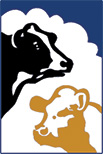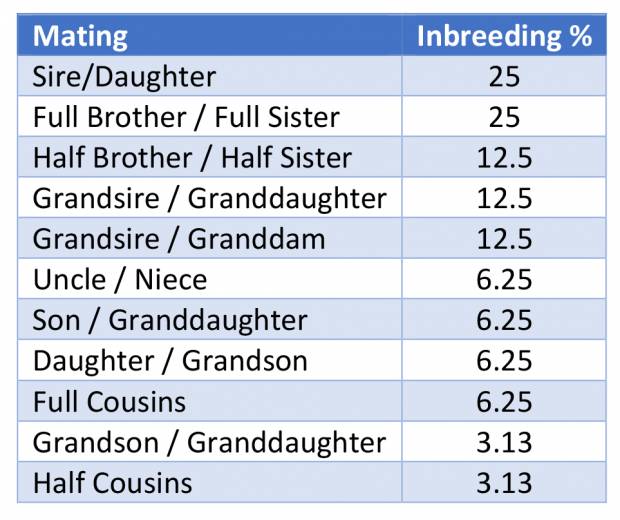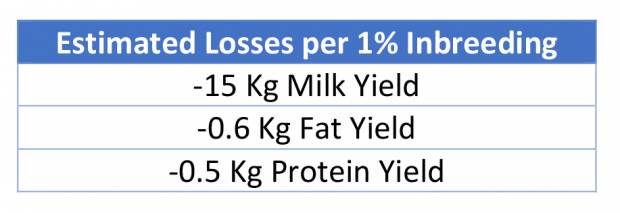Inbreeding
Brian Kennedy MVB, DBR, MRCVS, FrAgs
Company Veterinarian, AI Services (NI) Ltd
In the third of our Veterinary Columns, Company Veterinarian Brian Kennedy shares tips on Inbreeding.
Inbreeding
When animals related to one another are mated there is always a degree of inbreeding. Where the intention is to improve the quality of the progeny in a pedigree herd, it is often referred to as ‘Line Breeding.’ The aim is to concentrate the same genes and ‘fix’ a trait so it is consistently expressed down the generations.
Too much concentration of genetic make-up however is detrimental, leading to significant losses in production, fertility, longevity and general vigour.
Inbreeding also makes genetic defects more likely to occur, as there is an increased chance of undesirable recessive genes coming together.
See the charts pictured for Inbreeding Percentages and figures.
The Rule of Thumb is to avoid inbreeding to levels greater than 6.25%.



